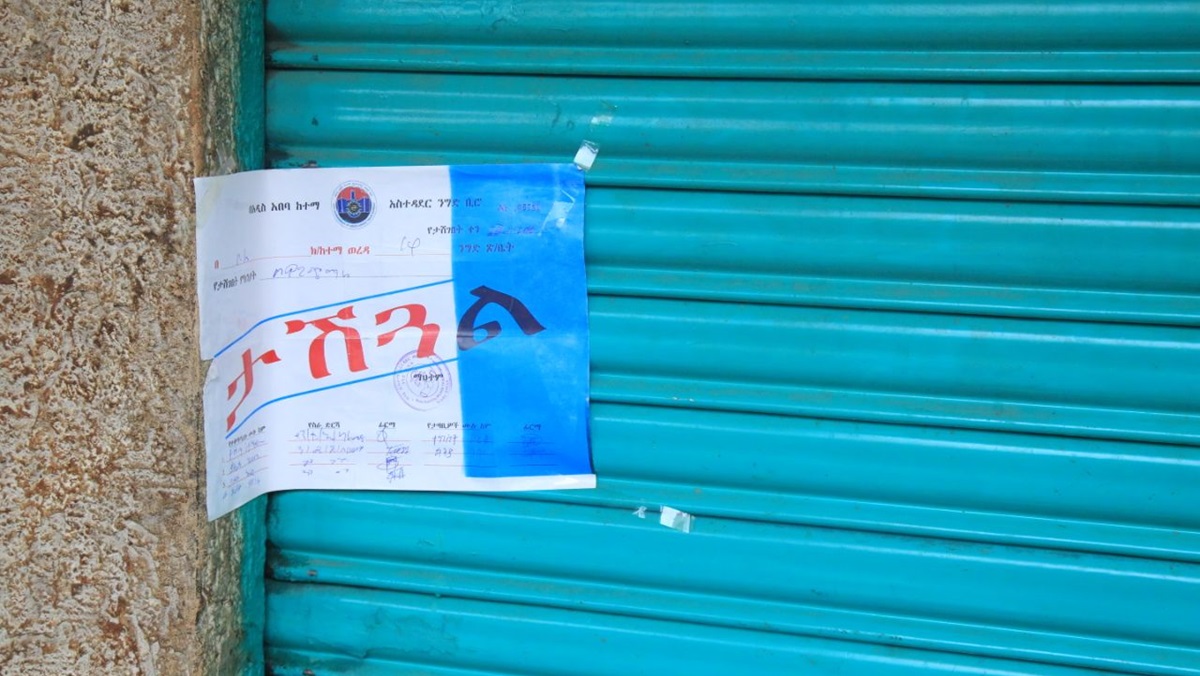Commentary: Ethiopia's Currency Market: A fragile convergence and the path to stability

By Abraham Asfaw (PhD) @abrishAbebe
Addis Abeba – It has been over a month since the Ethiopian government adopted a floating exchange rate for the birr, marking a significant shift in the country’s approach to foreign exchange markets.
While this move has narrowed the gap between the official and parallel market rates, creating the impression that equilibrium is within reach, I contend that this apparent convergence is neither stable nor sustainable without deliberate government intervention, particularly in engaging key actors from the parallel market.
To date, the most notable shift has been the adjustment of exchange rates in the official market, where intermediaries have aligned their rates more closely with those in the parallel market.
However, true market convergence would involve the official market setting the pace for price movements, with the parallel market either following suit with a marginal markup or fading altogether.
Presently, banks and other intermediaries in the official market are struggling to meet the robust demand for foreign currency from importers and travelers, forcing those unable to secure foreign currency through official channels to turn to the parallel market, where higher rates prevail.
Without a more balanced supply and demand dynamic in the official market, this price-matching game between the two markets is likely to persist, with broader implications for inflation and economic stability.
Structural weaknesses hindering market convergence
The persistent divergence between the official and parallel markets can be traced to underlying structural factors and the key stakeholders involved in both markets.
On the demand side, importers and travelers drive the need for foreign currency, while exporters and remitters provide the supply.
Intermediaries, mainly banks, serve as the facilitators of these transactions in the official market, operating in what is effectively an oligopolistic environment.
Banks establish a fixed buying price for foreign currency, primarily from exporters and remitters, and then set a selling price aimed at maximizing their profit margins—currently around 12%, reflecting limited competition in the sector.
In theory, importers and travelers should be able to obtain the foreign currency they need within the constraints set by the central bank. However, despite acquiring dollars from exporters and remitters at the official rate, banks are failing to meet demand.
They either impose onerous conditions on buyers or simply refuse to sell foreign currency without providing transparent reasons.
This reluctance could be due to banks’ expectations of a further depreciation in the birr, or it may reflect a genuine shortage of supply, as exporters and remitters, like the banks, may be withholding currency in anticipation of more favorable future exchange rates or channeling it through the parallel market.
Even if short-term behavioral adjustments could be encouraged among these actors, there are deeper, long-term structural constraints that limit the flow of foreign currency through official channels.
Much of Ethiopia’s export earnings are derived from agricultural products, which cannot be easily scaled up in the near term. Of more pressing concern, however, is the remittance market, where an estimated $5 billion flows annually through parallel channels, bypassing the official market entirely.
The competitive nature of the parallel market
Unlike the official market, the parallel market is characterized by a large number of small remitters and fragmented intermediaries, particularly within the diaspora community. These actors, operating with relative autonomy, engage in competition, with remitters largely serving as price takers in what resembles a highly competitive market.
However, intermediaries, including importers of essential goods, can exercise pricing power due to customer inattention or inertia—where remitters, despite potential financial benefits, remain loyal to established intermediaries out of habit or convenience. This grants intermediaries monopolistic-like power in an otherwise competitive market, complicating efforts to shift remittance flows to official channels.
This entrenched inattention among remitters represents a significant obstacle to achieving sustainable market convergence. Without substantial policy changes from the National Bank of Ethiopia (NBE), it is unlikely that the remittance flows currently moving through parallel channels will transition to the official market in the near future.
Policy options and constraints for the central bank
The NBE’s policy toolkit is constrained. With interest rates already at 15%, the central bank has limited scope to further tighten monetary policy without stifling economic growth.
Additional rate hikes aimed at reducing demand for foreign currency from importers and travelers could exacerbate an already challenging economic environment.
Instead, the central bank must turn to more direct and targeted interventions.
Past efforts to appeal to the nationalistic sentiments of the diaspora community, encouraging remitters to utilize official channels, have met with limited success.
Similarly, attempts to monitor and control money transfers in order to identify and curtail illegal transactions have proven costly and largely ineffective.
Two potential strategies remain for bringing more remittance flows into the official market.
First, the government could launch a concerted campaign—perhaps accompanied by the development of a dedicated application—to make sending money through official channels more attractive to the diaspora.
This approach would need to include competitive rates that rival those offered by parallel market intermediaries, coupled with incentives to encourage remitters to switch. However, given the magnitude of the remitter base, this would require a substantial investment to achieve widespread adoption.
A second, more promising option would be to reduce the barriers to entry for small intermediaries from the diaspora community to operate within the official market.
Currently, the capital requirement to participate in the official foreign exchange market stands at around $500,000, a prohibitively high threshold for smaller players. By significantly lowering this requirement, the government could encourage a greater number of intermediaries to transition from the parallel market to the official system.
This would not only help bring inattentive remitters into official channels but also increase the supply of foreign currency in the official market, thereby alleviating some of the pressure on importers and travelers.
Moreover, the influx of small intermediaries would diminish the pricing power of banks, introducing a broader, more competitive segment of the market.
The successful incorporation of remittances and small intermediaries into the official market is crucial for establishing the true value of the birr and achieving long-term economic stability.
By reducing reliance on the parallel market and increasing the supply of foreign currency through official channels, Ethiopia can stabilize both its currency and product markets, mitigating inflationary pressures and fostering sustainable growth.
Ultimately, the central bank must act decisively to create an environment where the official market is not merely responding to the parallel market but leading in price formation.
Only then can the birr attain a level of stability that supports broader macroeconomic objectives. AS
Editor’s Note: Abraham Abebe Asfaw (PhD) is an economist at Amazon Inc. He can be reached at abrishaerc@gmail.com







